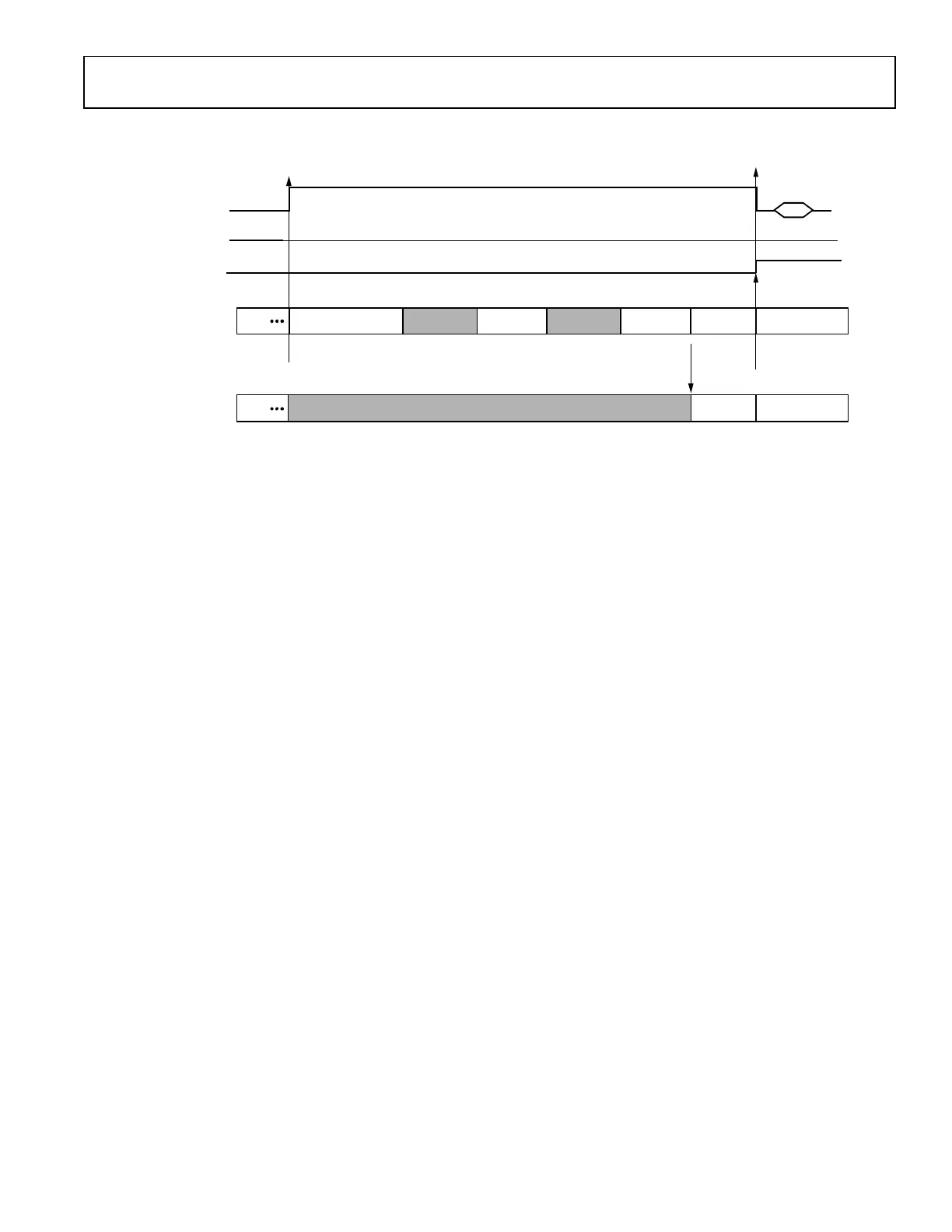Preliminary Technical Data UG-1828
Rev. PrB | Page 195 of 277
Mirror Analog GPIO Input
The digital GPIO sources can be configured to select Analog GPIO as input, potentially mirroring up to all available 12 analog GPIOs'
input on the digital GPIOs as output.
ANALOG GPIO OPERATION
The main purpose of the Analog GPIO pins is to serve as control pins for the external control elements, such as a Digital Step Attenuator
(DSA), Low Noise Amplifier (LNA), external LO/VCO components, T/R switch of TDD system, and so on An alternative function of
some Analog GPIO pins are to provide the auxiliary DAC output.
A high level overview of the analog GPIO features are provided in Table 84. Other features may be exposed in future software releases.
Table 84. Summary of Analog GPIO Features
Feature Description GPIO Pins Available for Feature
RX Gain Table
External Control
Word
The RX gain table includes a column for 2-bit control of an
external gain element (LNA), each Rx channel has 2 fixed
Analog GPIO pins associated with it.
Rx1 external control word: [AGPIO_1, AGPIO_0],
[AGPIO_5, AGPIO_4], [AGPIO_9, AGPIO_8]
Rx2 external control word: [AGPIO_3, AGPIO_2],
[AGPIO_7, AGPIO_6], [AGPIO_11, AGPIO_10]
Manual Pin Toggle
Manual control the GPIO output level, API functions sets
output pin levels and reads the input pin levels
Any Analog GPIO
Mirror Digital GPIO
Input
Allow the digital GPIO input to output on the analog GPIO pins Any Analog GPIO
RF Front-End Control
Allow the RF front end control signal output on analog GPIO
pins
AGPIO_0 through AGPIO_11
Auxiliary DAC Output Allow the auxiliary DAC output on analog GPIO pins AGPIO_0: AuxDAC0 output pin select
AGPIO_1: AuxDAC1 output pin select
AGPIO_2: AuxDAC2 output pin select
AGPIO_3: AuxDAC3 output pin select
RX Gain Table External Control Word
A complete description of RX Gain Table external control is provided in the Receiver Gain Control section in this User Guide.
For proper use of this feature, a custom gain table must be created that uses the external control column. When a gain index with a non-
zero value in the external control column of the gain table is selected, the value of the external control column will be output on a pair of
analog GPIO pins. The configuration of the GPIO pins for the gain table external control word is performed with the
adi_adrv9001_RxGainTableExtCtrlPinsSet() API command.
Manual Pin Toggle
Similar with the manual pin toggle for digital GPIOs, this feature allows control of the logic level of individual analog GPIO pins, after
configuring the I/O direction and source control, the Adi_adrv9001_GpioAnalogOutPinLevelSet() command is used to set the output
level of GPIO pins. adi_adrv9001_GpioAnalogOutPinLevelGet() command is used to read the analog GPIO pins output levels.
Additionally, adi_adrv9001_GpioAnalogInputPinLevelGet() command can be used to read the analog GPIO input level if the relative
analog GPIOs are configured as input.
Mirror Digital GPIO Input
The analog GPIO sources can be configured to select digital GPIO as input, potentially mirroring DGPIO_0 through DGPIO_11/input
on the analog GPIOs as output/[TBD]
RF Front-End Control
To save the baseband processor control pins, ADRV9001 provides the function to output control signals via analog GPIO pins to power
up/down the external RF front end components (i.e. LNA, TX Gain blocks, Ext PLL) or switch the T/R switch of a TDD system. For
example, a TX_On, RX_ON output signal through the analog GPIOs and associated with the ADRV9001 internal work timing and state
can be used to enable/disable the power amplifier and LNA respectively. Alike, EXT_PLL_ENABLE, VCO_ENABLE can be used to
enable/disable the relative components if they are necessary.
Auxiliary DAC Output
Auxiliary DAC can supply bias voltages, analog control voltages, or other system functionality, refer the Auxiliary Converters and
Temperature Sensor section for the detail. Analog GPIO 0 through 3 provide the alternative function for the Aux DAC 0 through 3
output respectively.

